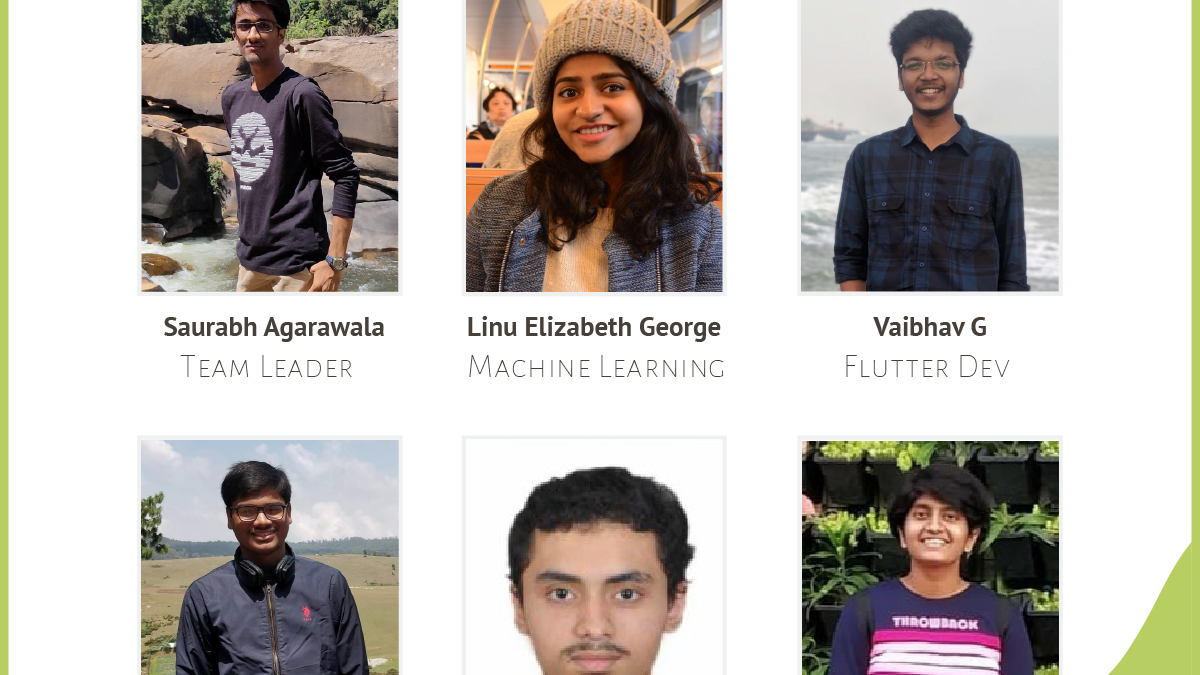Smart India Hackathon is a nationwide initiative to provide students with a platform to solve some of the pressing problems we face in our daily lives, and thus inculcate a culture of product innovation and a mindset of problem-solving.
A team of six students from our college called Code Breakers, comprising of Saurabh Agarwala, Linu Elizabeth George, Shashank Jaiswal, Vaibhav G and Rakshatha Vasudev from the Department of Information Technology and Sakshat Rao from the Department of Electronics and Communication, won a grand total of Rs. 1,00,000 at the Smart India Hackathon 2020 which was held virtually this year. They were mentored by Dr. Sowmya Kamath from the Department of Information Technology and Mr. Salman Shah who is an NITK alumnus.
The problem statement that they worked on was provided by the National Jute Board, Ministry of Textiles (Code: AR256) which required them to come up with an artificial intelligence based solution which could calculate the probability of future market trends on the basis of past years’ data and to suggest a suitable pricing model for the sale of cotton.
The team shared with us on how they handled the task:
“We built an Android/iOS app and web application which basically contains a portal that lets cotton farmers and ministry officials view the analysis and predicted cotton prices. Furthermore, with the portal, cotton farmers will be able to directly sell to buyers in their region at their specified price. The analysis provides future price prediction of different types of cotton on a daily, weekly and monthly basis in different markets of India and also the geographical heat map to visualise the price of cotton throughout the years. The tech stack we used were Flutter for android and iOS app, Django-REST for creating APIs, HTML, CSS and JavaScript for web front-end, and Heroku for deployment of web application and REST APIs.
We trained our models on a comprehensive dataset that ranged from around 2001 to 2020. Latest cotton prices were also available which helped in making up-to-date forecasts. These forecasts were made using our predictions of the expected percentage change in price with respect to a given day. Statistical models like ARIMA were used, while regressors and gradient boosting models were also trained. Individual forecasts from each of these models were finally merged to obtain the final forecasts along with a confidence interval.”
The link to the web portal:
https://cotton-forecast-sih.herokuapp.com
The link to the android app available on playstore:
https://play.google.com/store/apps/details?id=nitk.codebreakers.sih_cotton
The teammates mention that things took a drastic turn when the hackathon became a virtual event. Expecting it to be similar to the internal hackathon held in college to qualify for the main event, they looked forward to traveling and working together but ended up connected on their phones thousands of miles away. They focused on planning and discussing everything thoroughly before going ahead with the implementation. The mentors guided them throughout the competition with their experience and knowledge of the fields.
An inaugural ceremony was held by the team’s nodal centre, GIET University, followed by three days of evaluation and mentoring. All official communication took place on WhatsApp and Slack, while the code was supposed to be committed in a GitHub repository. The clear division of work beforehand made the process seamless and the work easy to merge in the end.
“It was a satisfying moment when our product was finally complete and ready to be evaluated. We poured all the energy we had left into the final presentation to ensure that the goal we had in mind when we started this project was captured by the judges.
And the moment we found out our hard work and dedication had paid off, is something we will cherish for years to come.”
Some important advice given by the Code Breakers for any team working on similar events in the future are:
- Know the strengths and weaknesses of each teammate specifically;
- Have constant discussions and work parallely on developing a demonstrable application instead of fussing about additional features that can be added later;
- Choose a problem statement that utilizes the team’s skills to the maximum while being impactful;
- Try working on your solution beforehand if it’s allowed;
- Set deadlines, always keep the time restraints in mind and ;
- Collaborate to complete tasks if required;
- Take breaks, remember to relax and keep a clear mind;
- Keep your target audience in mind and make the application convenient for them.
We congratulate the whole team on the victory and wish them luck for all future endeavours.


